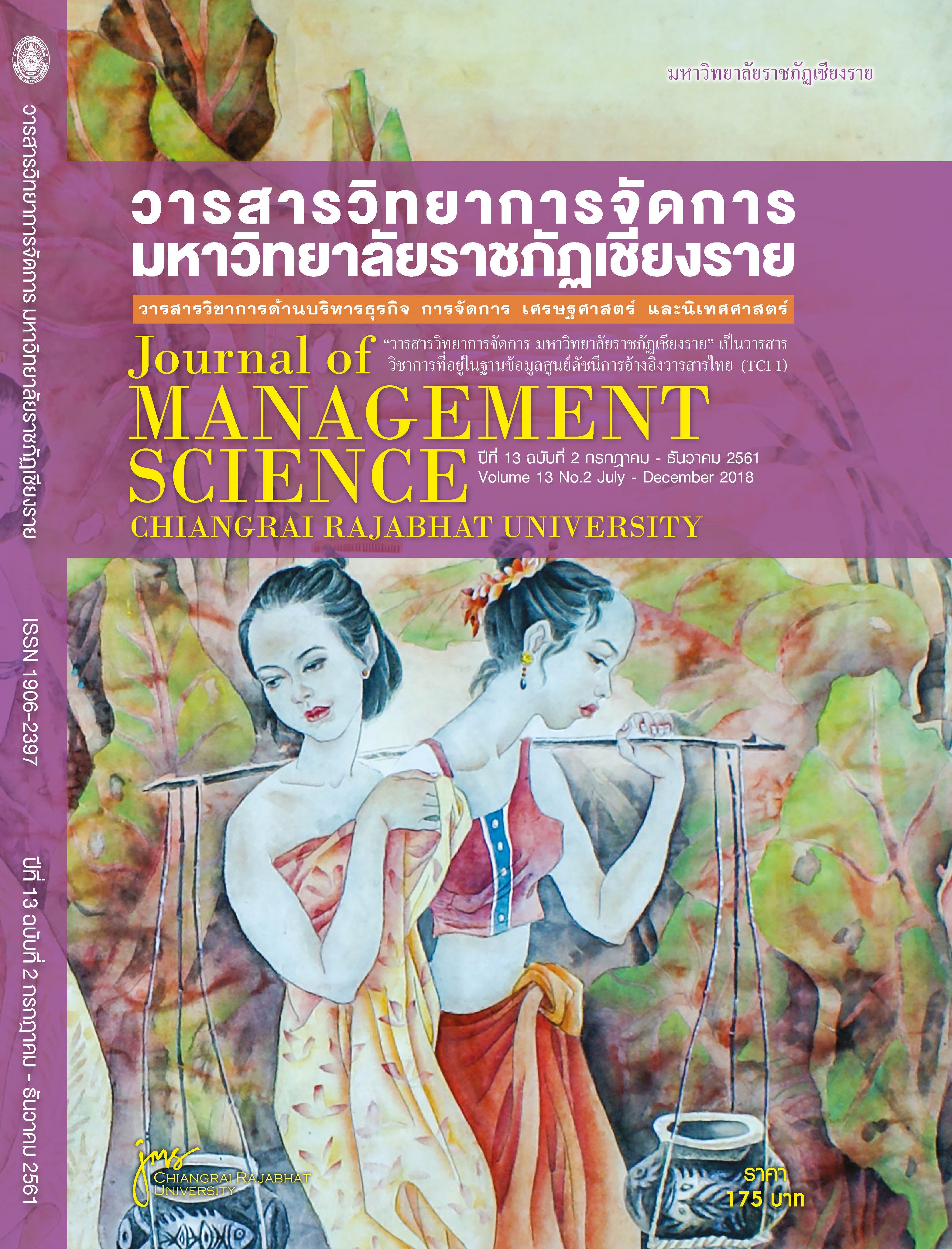Blue Tourism as a New Tourism form for Shaping Thailand into the Tourism Hub of the ASEAN Community
Main Article Content
Abstract
The study of Blue tourism as a new tourism form for shaping Thailand into the tourism hub of the ASEAN Community aims to study concepts and modes of Blue tourism as a new tourism form for Thailand, utilizing the available fishery resources in Phuket, Thailand. This research also proposes approaches to strategic plan of Blue Tourism for sustainable tourism development. The research employed mix methods, using both qualitative and quantitative techniques which included in-depth interviews, documentation analysis, direct observation and questionnaire survey. The sampling was 21 in-depth interviews and 381 tourist surveys. The findings highlighted that fishery resources were regarded crucial for the new form of tourism in Phuket (Blue tourism), with focus on conservative activities, the significance of local ways of life and responsible form of tourism. The results also revealed the importance of management and the enhancement in the tourist perception of this Blue tourism form. This research proposes two major strategic plan which include management and marketing strategic plans.
Article Details
Views and opinions expressed in the journal do not necessarily reflect those of the editors.
References
Cheng, S., Hu, J., Fox, D. and Zhang, Y. (2012). Tea tourism development in Xinyang, China, Stakeholders’ view. Tourism Management Perspectives. 2 (3), 28-34.
Hall , C.M. (2009). Degrowing Tourism: Decroissance, Sustainable Consumption and Steady-State Tourism. Anatolia.20 (1), 46-61.
Jareonlarp, T. (2550). Maritime Laws and Thailand’s Water Territorial Boundaries. Bangkok: Winyuchon Publishing. (in Thai)
Koasa-ard, M. & Auntong, A. (2558). Tourism Economy for Thailand. Bangkok: National Research Council Committee Office. (in Thai)
Komppula, R. (2001). New-Product Development in Tourism Companies-Case Studies on Nature-Based Activity Operation, 1-20: 10th Nordic Tourism Research Symposium. October 18-20, 2001, vasa, Finland.
Ministry of Tourism and Sport [MoTS]. (2558). Policy on Tourism and Sport of the MoTS. Bangkok: Ministry of Tourism and Sport. (in Thai)
Novelli, M.(ed). (2015). Niche tourism contemporary issues, trends and cases. Oxford: Butterworth-Heinemann.
Phayakvichien, P.(2555). Provincial enhancement and development of Tourism for the ASEAN Community. Seminar Project for Ministry of Interior’s Authorities.Academic Service Center, Dhurakij Pundit University. (in Thai)
Phuket Provincial Office. (2557). Operational data for Phuket Province. Phuket:Phuket Provincial Office. (in Thai)
Phuket Provincial Office. (2558).Development Plans for Phuket Province.Phuket:Phuket Provincial Office. (in Thai)
Phuket Provincial Office. (2559).Development Plans for Phuket Province. Phuket:Phuket Provincial Office. (in Thai)
Spilanis, I. & Vayani, H. (2003). Sustainable Tourism : Utopia or Necessity? The Role of New Forms of Tourism in the Aegean Islands, Journal of Sustainable Tourism. 00(0), 2003.
Stynes, J. D. & O’Halloran, C. (1987, October). Tourism Planning. Cooperative Extension Service, Michigan State University. Retrieved December 1, 2015, from: https://web1.msue.msuu.edu imp//modtd/33000005.html.
Tourism Authority of Thailand [TAT]. (2554). Market Trend. TAT Review. 3/2554 July-September, 67-89. (in Thai)
Tourism Authority of Thailand [TAT]. (2555). SCUBA Diving. TAT Review. 2/2555 April-June, 27-39. (in Thai)
Tourism Authority of Thailand [TAT]. (2556). Tourism Trends. TAT Review. 4/2556 October-December, 28-33. (in Thai)
Tourism Authority of Thailand [TAT]. (2557a). ASEAN Tourist Market Study. TAT Review. 2/2557 April-June, 12-17. (in Thai)
Tourism Authority of Thailand [TAT]. (2557b). Low Carbon Tourism. TAT Review. 4/2557 October-December, 62-66. (in Thai)
Tourism Authority of Thailand [TAT]. (2558). Tourism Promotion Plan for year 2559 B.E. TAT Review. 4/2558 October-December, 12-17. (in Thai)
Tourism Authority of Thailand [TAT]. (2559). Tourism Trends. TAT Review. 4/2559 October-December, 56-65. (in Thai)
Tourism Recreation Research. (2005). Cyber-tourism: A New Form of Tourism Experience, Tourism Recreation Research. 30(3): 5-16.
United Nation World Tourism Organisation (UNWTO). (2004). Indicators of Sustainable Development for Tourism Destinations: A Guidebook. Madrid, Spain: World Tourism Organisation.
University of Chamber of Commerce. (2558, 5-11 January). Global economy and market. DokbiaDhurakit Newspaper, 11. (in Thai)


